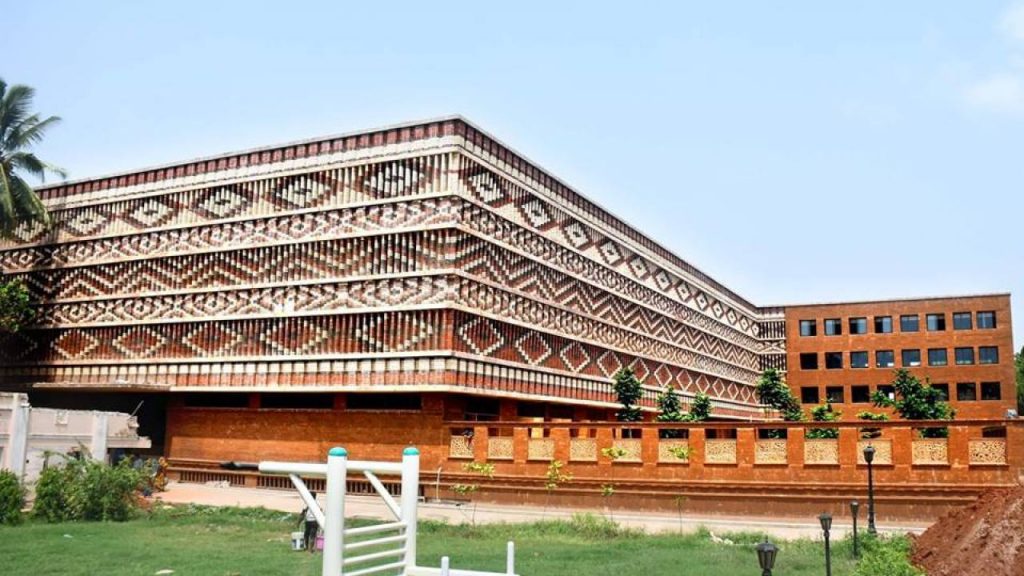Sanjay Kumar Panda
Actress Vidya Balan wearing the Shri Ganeet saree, woven with mathematical formula in the traditional tie & dye (Bandha) technique by Bhagabat Meher in the promotion of her film Shankuntala Devi, won huge appreciation. Later, the same saree was put to e-auction by a private firm and it fetched a high price of `55,000, which was paid to Meher. This has unfolded the power of marketing handloom on the internet. The newly constructed Odisha Krishi Bhavan, designed after the traditional tie & dye handloom fabrics, got the Dezeen Award-2020 from a London-based entity, and this has further reinforced the uniqueness of Indian handloom.
A major challenge for handloom came from weaving in power loom. Availability of power loom fabrics of similar type at a lower price made marketing of plain handloom fabrics difficult. This scenario got further aggravated with implementation of the highly subsidised rural wage employment programmes like MGNREGA. Taking the case of Odisha, the daily wage for unskilled work like earth-cutting increased from `25 in 1990 to `207 now.
During this period, the daily earning of a skilled handloom weaver increased from `200 to `500. In retrospect, earnings of the skilled weaver got proportionately reduced from eight times the wage of an unskilled labour in 1990 to only 2.5 times in 2020.This relative deprivation affected the economic, social and mental conditions of the weavers. There were requests for covering weavers under MGNREGA, which was declined on the ground that weavers are skilled and MGNREGA is meant only for unskilled labour.
An analysis of the costing of a typical handloom fabric would help in understanding the position better. Weaving of a silk saree (khandua pat) with traditional tie & dye design in Maniabandh area of Cuttack district requires about 500gm of raw silk. Cost of yarn, dyes and chemicals comes to about `2,000 per saree. The weaver earns about `2,000 for a saree; i.e. `500 for pre-loom tie & dye making and `1,500 for weaving on the loom. The total cost of production of one khandua saree comes to about `4,000. This is sold for about `6,000 to the customer. In this process, about `2,000 per saree goes as the transaction cost in various stages from the loom to the wardrobe. With four days taken to weave a saree, the weaver earns about `15,000 a month by weaving eight sarees.
The success of internet-based marketing of the Shri Ganeet saree shows the scope for reducing the transaction cost by e-marketing. Connecting the producer weaver with the tech savvy new generation consumer within the country and abroad, digitally, will reduce the transaction cost, as also cost of transport and dispatch, to one level of dispatch by speed post/ courier. The transaction cost indicated above can be reduced from `2,000 to `500 per saree. This will place the weaver in an advantageous position; increase the demand and lead to an increase in the earnings of the weaver. The weaver will also get information about the choice of the consumer directly. A well-heeled consumer will not mind paying a bit more for the fabrics of his/her choice. The weaver will produce it virtually with same amount of material and labour. This new paradigm is the need of the hour.
The major challenge in operation of this new model lies in winning the trust of the consumer, which makes branding of handloom a must. Keeping this in view, the India Handloom Brand was launched by Prime Minister Modi on the 7 August 2015. The producer weaver is required to submit an application with details about the fabrics and process to the local weaver service centre and to the development commissioner of handloom. After field verification, the applicant weaver is given the brand and details of composition, photo, and price of the fabrics and the weaver is hosted on official website of the Ministry of Textiles. This gives greater visibility to the fabrics (product) and the weaver. Interested buyers get details from the website and place order after making payment online to the weaver’s account. Thereafter the weaver sends the fabrics by speed post or courier.
The Atma Nirbhar Bharat announced by the PM in May this year envisages production with quality at a competitive price and this helps avoiding dependence on others, for exports too, where we have competitive advantages like PPE and N-95 masks produced for fighting Covid-19.
The writer is a former secretary to the Union Ministry of Textiles.
